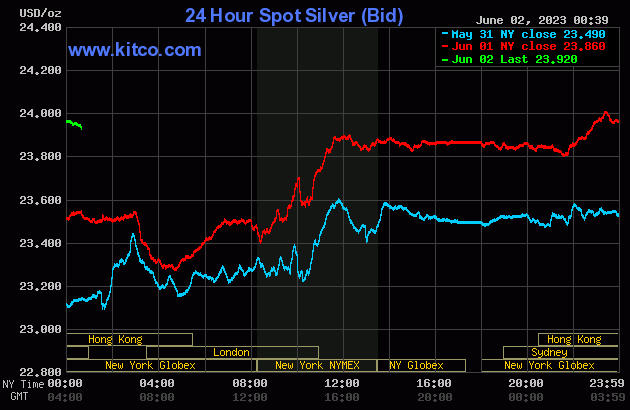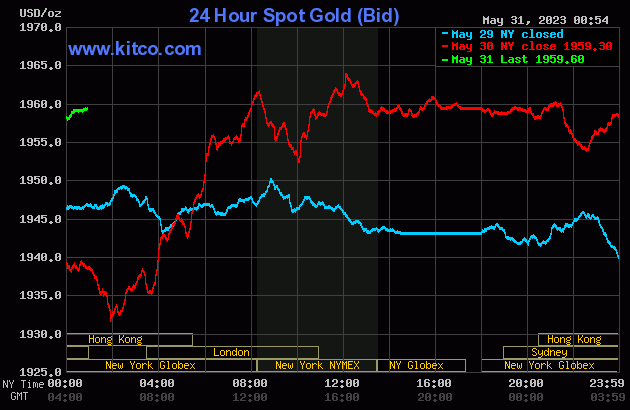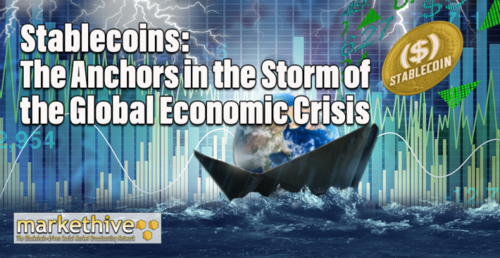US Dollar Depreciation: Causes and Implications for the Global Economy

The US Dollar has been losing value in the global economy, and this has been a cause for concern for many people. The dollar has been the dominant currency in the world for decades, but recent events have led to its decline. Many factors have contributed to this decline, including the COVID-19 pandemic, the US-China trade war, and the Federal Reserve's monetary policy.
The dollar's decline has had significant implications for the global economy. As the dollar loses value, other currencies, such as the euro and the yen, have gained in value. This has made it more expensive for countries that rely on the dollar to import goods and services. In addition, the decline in the dollar's value has led to inflation in the United States, as the cost of imported goods has increased. This has put pressure on the Federal Reserve to raise interest rates, which could further slow down the economy.
Despite the challenges posed by the dollar's decline, there are also opportunities. For example, a weaker dollar could make US exports more competitive in the global market. It could also encourage foreign investment in the United States, as assets become cheaper for foreign investors. However, these benefits may be short-lived, as a weak dollar could also lead to higher inflation and a slower economy. It remains to be seen how the dollar's decline will play out in the coming years, but it is clear that it will have far-reaching implications for the global economy.
The US Dollar in the Global Economy
The Basics
The US dollar is the world's reserve currency, which means that it is widely accepted and used in international transactions. It is also the most traded currency in the world, with a share of around 88% of all foreign exchange trades. The US dollar's dominance in the global economy is due to several factors, including the size and strength of the US economy, the stability of the US political system, and the liquidity of US financial markets.
The value of the US dollar is measured by the US Dollar Index (USDX), which tracks the value of the dollar against a basket of currencies, including the euro, yen, pound sterling, Canadian dollar, Swedish krona, and Swiss franc. The USDX is used by investors and traders to monitor the dollar's performance in relation to other major currencies.
Factors Affecting the US Dollar's Value
Several factors can affect the value of the US dollar in the global economy. One of the most important factors is the strength of the US economy. When the US economy is growing and expanding, the value of the dollar tends to rise, as investors and traders flock to US financial markets in search of higher yields and returns.
Another factor that can affect the value of the US dollar is the actions of the US Federal Reserve. The Federal Reserve can influence the value of the dollar by adjusting interest rates and implementing monetary policy measures. When the Federal Reserve raises interest rates, it can make the dollar more attractive to foreign investors, which can drive up its value.
The value of the US dollar can also be affected by global economic events and trends. For example, when emerging markets experience economic growth and stability, they may become less reliant on the US dollar, which can lead to a depreciation of the dollar's value. Similarly, when the eurozone or European Central Bank takes actions that affect the euro, it can impact the value of the dollar relative to the euro.
In conclusion, the US dollar's value in the global economy is influenced by a complex set of factors, including the strength of the US economy, the actions of the US Federal Reserve, and global economic trends and events. Understanding these factors can help investors and traders make more informed decisions about how to invest in the US dollar and other currencies.
The Role of the Federal Reserve
The Federal Reserve, also known as the Fed, is the central bank of the United States. It plays a crucial role in the country's economy by implementing monetary policies that influence interest rates, inflation, and employment. The Fed has a significant impact on the value of the US dollar in the global economy.
Monetary Policy
The Fed's monetary policy involves controlling the supply of money in circulation. By increasing or decreasing the money supply, the Fed can influence inflation and economic growth. When the Fed increases the money supply, it can lead to inflation, which can decrease the value of the US dollar. Conversely, when the Fed decreases the money supply, it can lead to deflation, which can increase the value of the US dollar.
Interest Rates
The Fed also has the power to set interest rates, which can affect the value of the US dollar. When the Fed raises interest rates, it can make the US dollar more attractive to foreign investors, which can increase its value. Conversely, when the Fed lowers interest rates, it can make the US dollar less attractive to foreign investors, which can decrease its value.
Quantitative Easing
Quantitative easing is a monetary policy tool used by the Fed to stimulate the economy by increasing the money supply. The Fed does this by purchasing government bonds and other securities from banks, which increases the banks' reserves and allows them to lend more money. This can lead to inflation, which can decrease the value of the US dollar.
Overall, the Fed plays a critical role in the value of the US dollar in the global economy through its monetary policy, interest rate decisions, and quantitative easing programs. Investors and other countries closely monitor the Fed's actions and decisions, as they can have a significant impact on the value of the US dollar.
Impact on the US Economy
The weakening of the US dollar has both positive and negative effects on the US economy. This section will discuss the impact of the US dollar losing value on inflation and deflation, exports and imports, and investments and profits.
Inflation and Deflation
A weak US dollar can lead to higher inflation in the United States. This is because a weak dollar makes imports more expensive, which in turn increases the cost of goods and services. On the other hand, a stronger dollar can lead to deflation, which is a decrease in the general price level of goods and services. This is because a stronger dollar makes imports cheaper, which in turn lowers the cost of goods and services.
Exports and Imports
A weak US dollar can make US exports more competitive in foreign markets, as they become cheaper for foreign buyers. However, a weak dollar can also make imports more expensive, which can hurt US consumers and businesses that rely on imports. A strong US dollar can have the opposite effect, making US exports more expensive and less competitive in foreign markets, but making imports cheaper for US consumers and businesses.
Investments and Profits
A weak US dollar can make US investments more attractive to foreign investors, as they can buy more US assets for less money. However, a weak dollar can also hurt the profits of US multinational companies that operate abroad, as their foreign earnings are worth less when converted back into US dollars. A strong US dollar can have the opposite effect, making US investments less attractive to foreign investors, but increasing the profits of US multinational companies that operate abroad.
Overall, the impact of the US dollar losing value on the US economy is complex and depends on a variety of factors, including inflation, exports and imports, and investments and profits. While a weak US dollar can have some positive effects, it can also have negative effects on the US economy.
Frequently Asked Questions
Why is the US dollar losing value?
The US dollar has been losing value due to a variety of factors, including the increasing national debt, the ongoing trade deficit, and the Federal Reserve's monetary policy. The US government has been borrowing more money than it can pay back, which has led to an increase in the money supply and a decrease in the value of the dollar. Additionally, the US has been importing more goods than it exports, which has also contributed to the weakening of the dollar.
What happens if the US dollar loses reserve status?
If the US dollar loses its status as the global reserve currency, it could have significant consequences for the US economy and the global financial system. The US would lose its ability to borrow money at low interest rates, and the demand for US dollars would decrease, leading to a further decline in the value of the currency. Other countries would also be less likely to hold US dollars as a reserve currency, which could lead to a shift towards other currencies such as the euro or the yuan.
What happens when the US dollar loses value?
When the US dollar loses value, it becomes more expensive to purchase goods and services from other countries, as the exchange rate decreases. This can lead to inflation in the US economy, as the prices of imported goods increase. Additionally, US exports become more competitive, as they are cheaper for foreign buyers, which can help to boost the US economy.
Will the US dollar lose its status as the global reserve currency?
While it is possible that the US dollar could lose its status as the global reserve currency, it is not a foregone conclusion. The US dollar has held this position since the end of World War II, and it remains the most widely used currency for international transactions. However, the rise of other currencies such as the euro and the yuan, as well as the ongoing economic challenges facing the US, means that the dollar's position as the global reserve currency is not guaranteed.
How much value has the dollar lost since 1971?
Since the US abandoned the gold standard in 1971, the value of the dollar has declined significantly. In 1971, one US dollar was worth 1/35th of an ounce of gold. Today, one US dollar is worth around 1/1800th of an ounce of gold. This represents a significant decline in the value of the dollar over the past 50 years.
Are banks preparing for a major devaluation of the US dollar?
While there is no evidence to suggest that banks are actively preparing for a major devaluation of the US dollar, many financial institutions are diversifying their holdings to reduce their exposure to any potential risks. This includes investing in other currencies, commodities, and assets that are not denominated in US dollars. Additionally, some central banks are exploring the possibility of creating their own digital currencies, which could potentially challenge the dominance of the US dollar in the global financial system.
Tim Moseley









 Bitcoin voters could decide close U.S. elections as bipartisan political support grows – Lyn Alden
Bitcoin voters could decide close U.S. elections as bipartisan political support grows – Lyn Alden








(6).gif)


 The gold market posted its first monthly loss since February, wrapping May down about $36. As markets eye the crucial Congress vote to lift the debt ceiling, some Federal Reserve speakers are pushing for a "hawkish pause" at the June 13-14 meeting.
The gold market posted its first monthly loss since February, wrapping May down about $36. As markets eye the crucial Congress vote to lift the debt ceiling, some Federal Reserve speakers are pushing for a "hawkish pause" at the June 13-14 meeting.
 Gold price trades below $1,950 ahead of Congress debt ceiling vote and June Fed decision
Gold price trades below $1,950 ahead of Congress debt ceiling vote and June Fed decision





.png)
.png)



